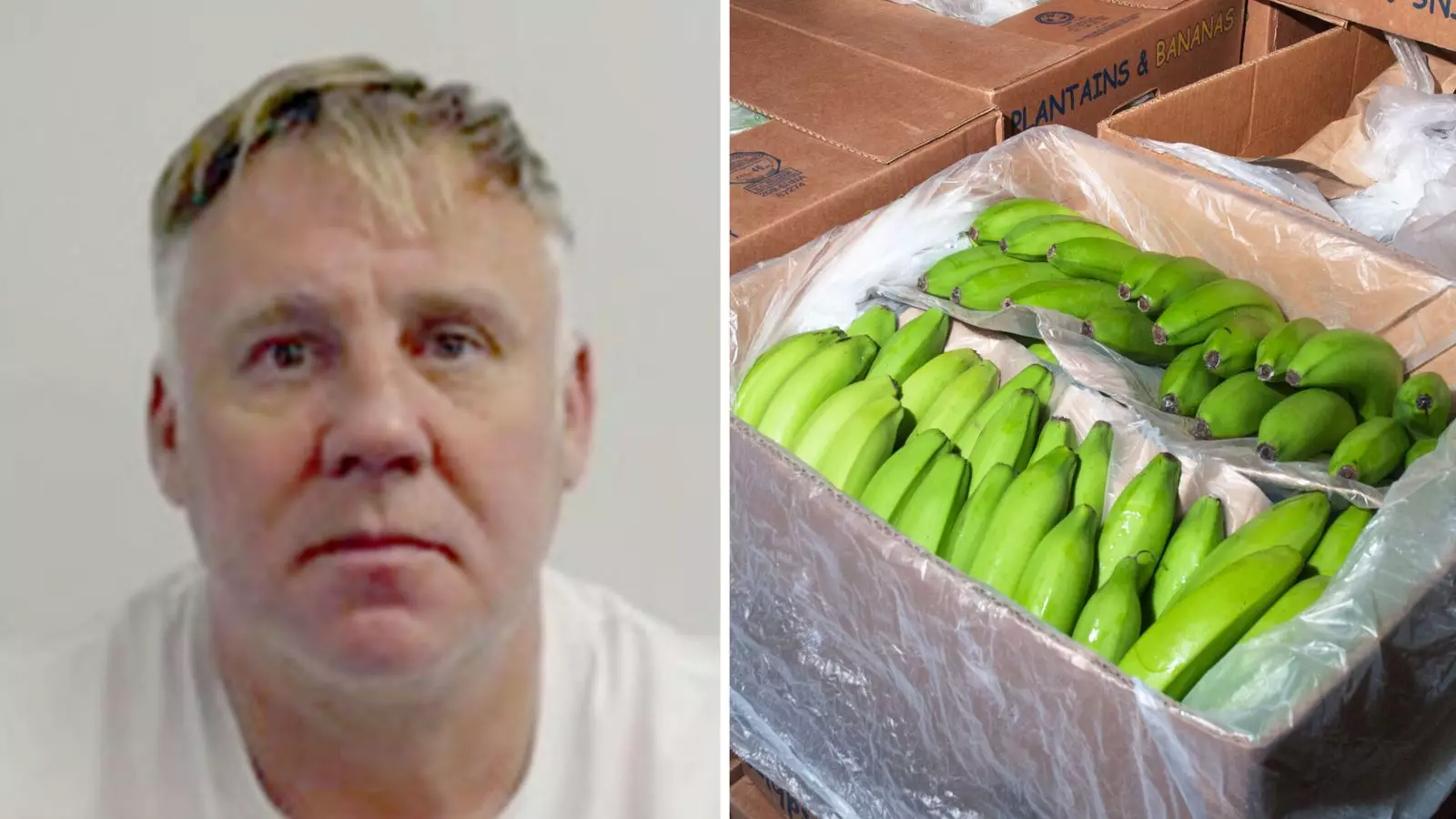The story of Jamie Stevenson, infamously known as the “Iceman,” serves as a cautionary tale about the pervasive nature of organized crime and the complex networks that facilitate illicit activities in the UK. Recently sentenced to 20 years in prison for his role in a massive cocaine smuggling operation, Stevenson’s case sheds light on the lengths individuals will go to for monetary gain, as well as the relentless efforts of law enforcement agencies to combat such activities.
Mastermind of a Major Drug Operation
Stevenson’s arrest marked the conclusion of a high-stakes investigation dubbed Operation Pepperoni, a collaborative effort between Police Scotland and the National Crime Agency (NCA). His operation orchestrated the importation of nearly a tonne of cocaine, hidden within a shipment of bananas from Ecuador and intended for a Glasgow-based fruit merchant. The magnitude of this case cannot be understated: the shipment contained a staggering 952 blocks of cocaine, which were ultimately valued at an estimated £100 million. However, legal representatives contest this figure, suggesting that the true street value could be around £76 million depending on the market dynamics.
Such clandestine activities underscore not only the operational sophistication of organized crime syndicates but also raise questions regarding the protection of society from the underground economy. The carefully hidden drugs reveal a labyrinthine trade network that poses a considerable challenge for law enforcement departments, showcasing the need for enhanced surveillance and counter-narcotics strategies.
Stevenson’s criminal history dates back several years; he was previously imprisoned in 2007 following Operation Folklore, which aimed to dismantle his extensive money laundering operations. The strategies employed during this investigation foreground the intricate and calculated approach organized crime groups take to elude law enforcement. His operations, as described by Graeme Pearson, the former director of the Scottish Crime and Drug Enforcement Agency, operated with a level of organization reminiscent of the fictional mafia depicted in television series like “The Sopranos.”
Stevenson’s return to criminality and his astonishing ability to evade capture is a salient reminder of the continuous struggle law enforcement faces against recidivist offenders. After a crackdown on etizolam production in 2020, Stevenson managed to flee the UK, only to be apprehended while jogging in the Netherlands weeks later. This part of his narrative raises pointed discussions about how criminal networks adapt swiftly to law enforcement pressures, employing tactics of evasion paired with the use of encrypted communication tools such as EncroChat.
The ramifications of Stevenson’s criminal enterprises extend beyond his immediate circle of associates. His associates, like Paul Bowes and others, played various roles in a wider network that included the production and supply of etizolam, further complicated by their international dealings. The legal outcomes for these individuals also highlight a significant angle—community safety versus the individualization of crime.
As each accomplice was sentenced, ranging from three to seven years in prison, it prompted a conversation about sentencing in relation to the broader implications of drug trafficking. The relatively lighter sentences for some of the associates could imply a troubling message about the accountability of those who participate in such organized frameworks. How can societies confront the allure and dangers of organized crime? This question reverberates throughout the justice system, where responses need to address not only individual accountability but also the systemic factors that enable these networks to flourish.
The downfall of Jamie Stevenson is far from a victory in the war against organized crime. It illustrates the ongoing battle between law enforcement and a resilient underground economy that adapts to the pressures placed upon it. With Stevenson now behind bars, authorities remain vigilant in their pursuit of dismantling other segments of the apparatus that support drug trafficking and organized crime in the UK.
As society looks to the future, it becomes imperative to foster a multi-faceted approach that seeks not only to punish individuals but also prevent the emergence of new crime networks. Education, community programs, and international co-operation will be key in putting the brakes on a cycle that preys upon the vulnerable and engenders a culture of crime. Stevenson’s case serves as a potent reminder of the stakes involved in this ongoing struggle and reinforces the need for collective action against the forces of organized crime.


Leave a Reply